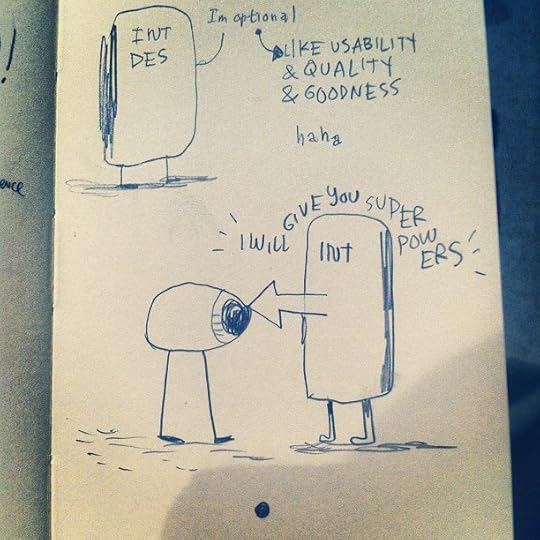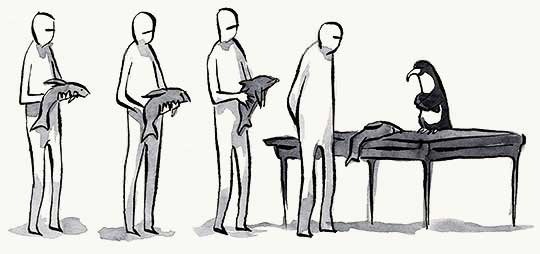Jeffrey Zeldman's Blog, page 51
August 21, 2012
August 8, 2012
An Event Apart posts 2013 schedule: 8 cities, 8 shows
AN EVENT APART, the design conference for people who make websites, announces its 2013 schedule: eight cities, eight shows.
Registration is now open for:
Atlanta – February 18-20, 2013
Seattle – April 1-3, 2013
San Diego – May 20-22, 2013
Boston – June 24-26, 2013
Washington, DC – August 5-7, 2013
Chicago – August 26-28, 2013
Austin – September 30-October 2, 2013
San Francisco – December 9-11, 2013
Join us for three days of design, code, and content with fantastic designers, writers, and speakers including Josh Clark, Kim Goodwin, Erika Hall, Scott Jehl, Colleen Jones, Jeremy Keith, Ethan Marcotte, Karen McGrane, Mike Monteiro, Jason Santa Maria, Jen Simmons, Jared Spool, Jon Tan, Aarron Walter, and Luke Wroblewski — not to mention Eric Meyer and me.
“The Web Everywhere: Multi-Device Web Design,” a full-day workshop by Luke Wroblewski (Mobile First, A Book Apart 2012), follows each two-day conference event in all eight cities.
You can register for the one-day multi-device web design workshop, for the two-day conference, or save over $100 when you attend all three days! Tickets are now on sale, and are first-come, first-served. Every AEA show in the past three years has sold out in advance. Don’t miss out; register early.
Photos and Drawings from An Event Apart DC 2012
AN EVENT APART is the design conference for people who make websites. Enjoy these photos and drawings from An Event Apart DC, now concluding at the Westin Alexandria.
The next An Event Apart three-day conference event takes place later this month in Chicago.
See some of you there!
August 2, 2012
Leo Laporte interviews JZ
IN EPISODE 63 of Triangulation, Leo Laporte, a gracious and knowledgeable podcaster/broadcaster straight outta Petaluma, CA, interviews Your Humble Narrator about web standards history, responsive web design, content first, the state of standards in a multi-device world, and why communists sometimes make lousy band managers.
July 31, 2012
Product Management for the Web; Beyond Usability Testing
IN ISSUE NO. 357 of A List Apart for people who make websites:
Beyond Usability Testing
by DEVAN GOLDSTEIN
To be sure we’re designing the right experience for the right audience, there’s no substitute for research conducted with actual users. Like any research method, though, usability testing has its drawbacks. Most importantly, it isn’t cheap. Fortunately, there are other usability research methods at our disposal. The standouts, expert review and heuristic evaluation, are easy to add to a design and development process almost regardless of budget or resource concerns. Explore these techniques, learn their advantages and disadvantages, and get the low-down on how to include them in your projects.
Product Management for the Web
by KRISTOFER LAYON
Whether we prototype, write, design, develop, or test as part of building the web, we’re creating something hundreds, thousands, or maybe even millions of people will use. But how do we know that we’re creating the right enhancements for the web, at the right time, and for the right customers? Because our client or boss asked us to? And how do they know? Enter product management for the web—bridging the gap between leadership and customers on one side, and the user experience, content strategy, design, and development team on the other. Learn to set priorities that gradually but steadily make your product (and the web) better.
SINCE 1998, A List Apart has explored the design, development, and meaning of web content, with a special focus on web standards and best practices.
Illustration by Kevin Cornell for A List Apart Magazine.
July 30, 2012
Saul Bass pitches AT&T
CULTURAL HISTORY GEM: Saul Bass’s Original Pitch for the Bell Systems Logo Redesign, 1969. Article and curation via brainpickings.org. Hat tip: Tim Murtaugh.
July 28, 2012
New on Foursquare: great architectural experiences
Great Architectural Experiences is a list I’ve begun on Foursquare. Currently there are 29 33 entries.
The list is not limited to buildings. After all, some of New York’s greatest architectural experiences include crossing Brooklyn Bridge on foot; walking for miles along 5th Avenue north of 59th Street; and observing the shifting dynamics of nature versus culture when exploring the city-ringed, human-designed masterpiece that is Central Park. Friends visiting New York often ask what they should see. Here is a partial answer. More to come.
July 25, 2012
Proposed standards for the care and feeding of user generated content
THIS MORNING Contents Magazine launched the beginning of something both good and important: a set of guidelines that could lead to a safer world for user-created content.
Contents believes (and I agree) that products and services which make a business of our stuff—the photos, posts, and comments that we share on their platforms—need to treat our content like it matters. Not like junk that can be flushed the moment a product or service gets acquired or goes under.
On the web, popularity waxes and wanes; beloved services come and go. AOL was once mighty. MySpace was unstoppable. Nobody expected Geocities, Delicious, or Gowalla to just disappear, taking our stories, photos, and memories with them. But that’s what happens on the web. Tomorrow it could be Facebook, Twitter, Instagram, or Flickr. We can continue to blindly trust these companies with our family histories, and continue to mourn when they disappear, taking our data with them. Or we can demand something better.
Contents and its small team of advisors have devised three simple rules customer-content-driven services and apps should follow to respect and protect our content:
Treat our data like it matters. Keep it secure and protect our privacy, of course—but also maintain serious backups and respect our choice to delete any information we’ve contributed.
No upload without download. Build in export capabilities from day one.
If you close a system, support data rescue. Provide one financial quarter’s notice between announcing the shutdown and destroying any user-contributed content, public or private, and offer data export during this period. And beyond that three months? Make user-contributed content available for media-cost purchase for one year after shutdown.
You may see this as a pipe dream. Why should a big, successful company like Facebook listen to us? But citizen movements have accomplished plenty in the past, from bringing web standards to our web browsers, to peacefully overthrowing unpopular governments.
I’m on board with the new Contents guidelines and I hope you will be, too. If enough of us raise enough of a sustained fuss over a sufficient period, things will change.
More at Special Report #1: Data Protection — Contents Magazine.
July 24, 2012
HTML Marches On

IN A LETTER dated July 19, 2012, WHATWG leader and HTML living standard editor (formerly HTML5 editor) Ian Hickson clarifies the relationship between activity on the WHATWG HTML living standard and activity on the W3C HTML5 specification. As my dear Aunt Gladys used to say, you can’t ride two horses with one behind.
July 23, 2012
A List Apart news

Presenting Sara Wachter Boettcher, ALA’s new editor-in-chief.
WITH THE RELEASE on July 10, 2012 of the A List Apart Summer Reading Issue (a collection of favorite articles from 355 issues of the magazine), ALA’s editor-in-chief Krista Stevens has hung up her spurs and moved on.

Over six significant web years, Krista’s passion for great writing led to such extraordinary articles as More Meaningful Typography by Tim Brown, Orbital Content by Cameron Koczon, In Defense of Readers by Mandy Brown, Responsive Web Design by Ethan Marcotte, and many others.
She helped ALA anticipate the important ideas in the rapidly changing fields of web design, web development, user experience, and content strategy, and continued the magazine’s tradition of pioneering and promoting best practices, while also broadening the kinds of stories we covered. Behind the scenes, she also updated our processes; coaxed the best work possible out of authors and staff; remembered birthdays and anticipated conflicts before feelings could get hurt; and more. She led us and mothered us, and she will be missed. You can follow Krista on Twitter, benefit from her user advocacy at Automattic, and continue to be enlightened by her via Contents Magazine. Thank you, Krista.
New editor-in-chief Sara Wachter Boettcher is a content strategist and writer who recently moved to Lancaster, PA, where she bucks the local Amish tradition by spending her days making, reading, and writing things on the web. She is the author of the upcoming Rosenfeld Media book Content Everywhere, a frequent conference speaker, and has contributed articles and essays to A List Apart (Future-Ready Content) and Contents (On Content and Curiosity).
Currently a consultant under her own shingle, Sara previously spent a half-dozen years working in agencies, mainly at Off Madison Ave, where she started as a web writer and became the director of interactive content and marketing strategy. Although her A List Apart editorship does not officially begin until August, Sara has already dived in behind the scenes. She is whip-smart and a pleasure to know.
Welcome, Sara!








